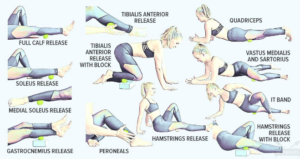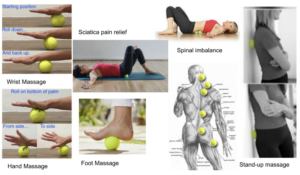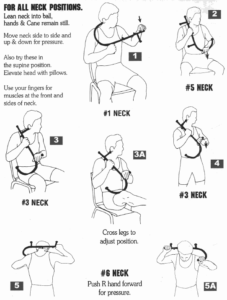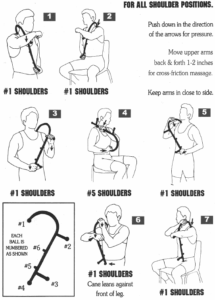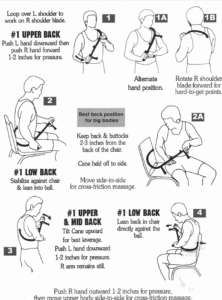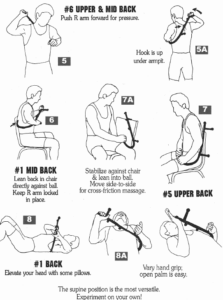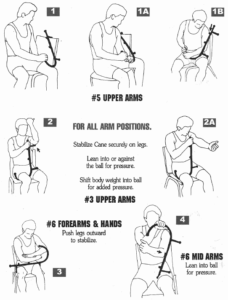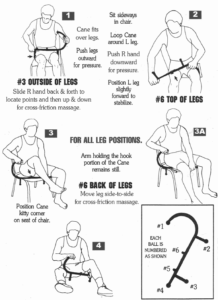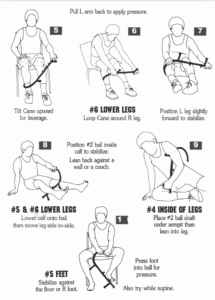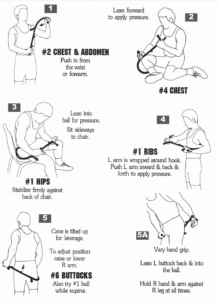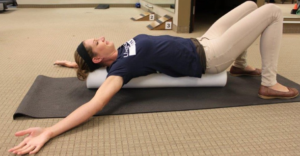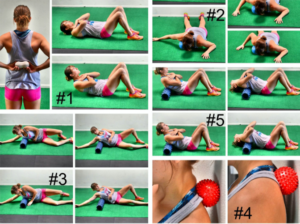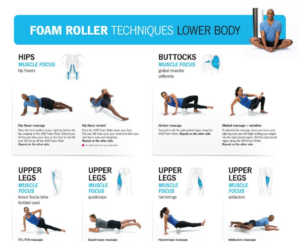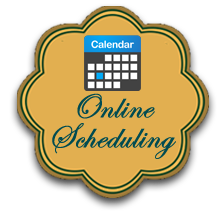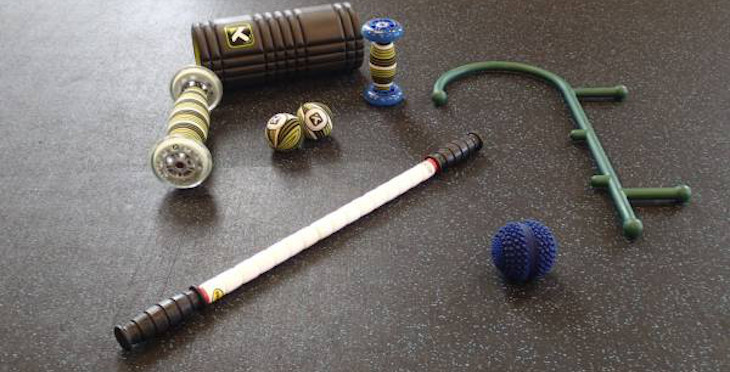
Self-Care Massage Tools That You Can Use At Home
02-17-22
Massage therapy has many benefits and improves your physical and mental health. By adding self-massage as your weekly or daily personal wellness regime, you can reap the benefits of creating an integral part of your pain management treatment and improve health. Self massage doesn’t need to happen when you are sore, tense or stressed. It is a resource to get additional benefits of massage therapy at home. You just need to use the right tools. You may already have these tools.
A Tennis Ball (or Lacrosse Ball)
The tennis ball has a soft but firm surface. It is best to start slowly and avoid placing the ball over the spine or other bony regions. Use up to 20 seconds at each point. The tennis ball is a great way to massage soft tissue in the upper back, lower back, hips, and buttock region. Oftentimes, your massage therapist or physical therapist may recommend using the tennis ball as a self-massage technique to work on sciatic pain or plantar fasciitis at home.
For easier use and control of the ball, place it in a sock to keep it from rolling away from you. You can sling it over your shoulder and lean against the wall or lay on it on the floor when you find the areas you need to address.
Using the tennis ball on the back while against the wall:
Place the tennis ball between yourself and the wall. Roll around until you find a spot on your back that is bothering you. Lean back into the ball to apply pressure. You can hold it for 20 seconds to get the sore spot to release. It is normal to feel some tenderness or soreness when you apply pressure. If the pain doesn’t ease and feels as if it is increasing, then it is best to stop applying pressure.
Add motion with pressure:
Another way to work on a knot in your mid to upper back is to add a little motion along with the pressure. For example if you have a knot in your upper back, pin the ball between the tender spot on your back and the wall, then bring your arm out. Slowly move your arm to your side and to your front or upwards to help the spot to release.
Click images to enlarge:
What is a Cane Massager?
A cane massage is used to apply pressure to tensed muscles. There are various names of cane massagers such as Theracane or Body Back Buddy. The unique designs of the cane gives you the ability to apply deep pressure to those hard to reach areas of your body.
Why use a cane massager?
These canes are great to include as an integral part of your treatment, especially if you suffer from muscular pain and discomfort. It creates an increased capability to take more responsibility for one’s own health. Cane massagers are also wonderful to use when a tennis ball can’t provide enough pressure or to reach a certain area.
How to use a cane massager?
There are various ways to use a cane massager. To keep it simple, we will only focus on theracane. By understanding the theracane, you can become creative on how to implement various versions of it.
The easiest method of using the theracane is by hooking it around your shoulder to reach your mid to upper back. Apply pressure to the tensed area. Hold the pressure for about 30 seconds. You can repeat the pressure up to 3 times in one spot. You can also use the hook to reach your lower back and work on the buttock region. The straight knobs can be used on the neck, arms, hips, IT bands, and legs.
Similar to the tennis ball, you can add motion as you press into the knots.
Click images to enlarge:
Foam Rollers and Massage Rollers
Foam rollers and massage rollers are used to manipulate large areas at once and for generalized release. They are also great for relieving tension and improving postures. Commonly these tools are used for the back, legs, IT band, hips, and buttocks regions.
Foam rollers and massage rollers come in various sizes and textures.
A foam or massage roller may not be for everyone. Sometimes the use of these tools can feel painful, especially to those with very stiff muscles. If you do experience pain while using the foam roller, stop using it until you can consult a doctor.
Which roller should I use:
It all depends on what you are trying to achieve. It is appropriate to have various sizes for different needs.
A dimpled or textured roller can be useful when needing a deeper massage to trigger points and knots in the muscles. This type of roller is great for body parts that are prone to muscle tightness, like the back and shoulders. However, a dimpled or texture roller can be painful if you are using it to stretch.
A foam roller that has a small diameter is helpful for targeting certain parts of the body. Also a shorter roller works well with smaller areas like arms and calves. Short length rollers are also portable and great to use if you are limited with space.
Large and long foam rollers are used for stretching. The long foam rollers allow you to roll with it perpendicular to your back without issues of falling off the ends. A 36 inch roller is usually the longest available, but you may find longer rollers online if needed.
Half rollers are great if you have issues with stability or strength. To use a half roller, lay the flat side down. The flat side should prevent it from moving from under you. Simply lay on the half-round roller in the area of the tight muscle to release the tension.
Ask your doctor for help with choosing and using a roller. If you aren’t sure which type of foam roller is ideal for you, ask your doctor or physical therapist. A doctor can determine what your primary use of the foam roller will be, and help you choose the best roller for you. Your doctor will also be able to show you how to use a foam roller in a way that is safe and helpful for you.
Click images to enlarge:
How often should I use these techniques:
Some of these techniques may remain as part of your routine for months and even years. It all depends on the dysfunction or how much stress your body goes through.
Disclaimer and Warnings:
Don’t use when sick.
Don’t use on swollen areas.
Don’t use on or near open wounds.
Don’t use on broken bones.
Don’t use on or near a blood clot.
Don’t use on hypersensitive skin or where there are rashes, hives, eczema or other skin conditions.
Don’t apply direct pressure on varicose veins.
Don’t use on or do abdominal techniques if you have had recent abdominal surgery.
Avoid use on any parts of the body that has impaired sensation.
As you experience relief from utilizing these tools, you may feel like you might want to increase your pressure. While this might show some progress, it is important to understand that staying in one spot too long can create sore spots and inadvertently damage the tissues around the area.
